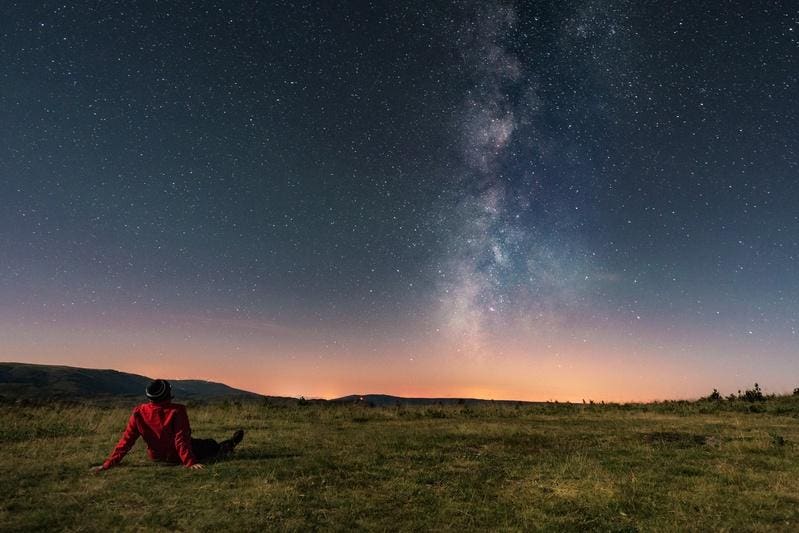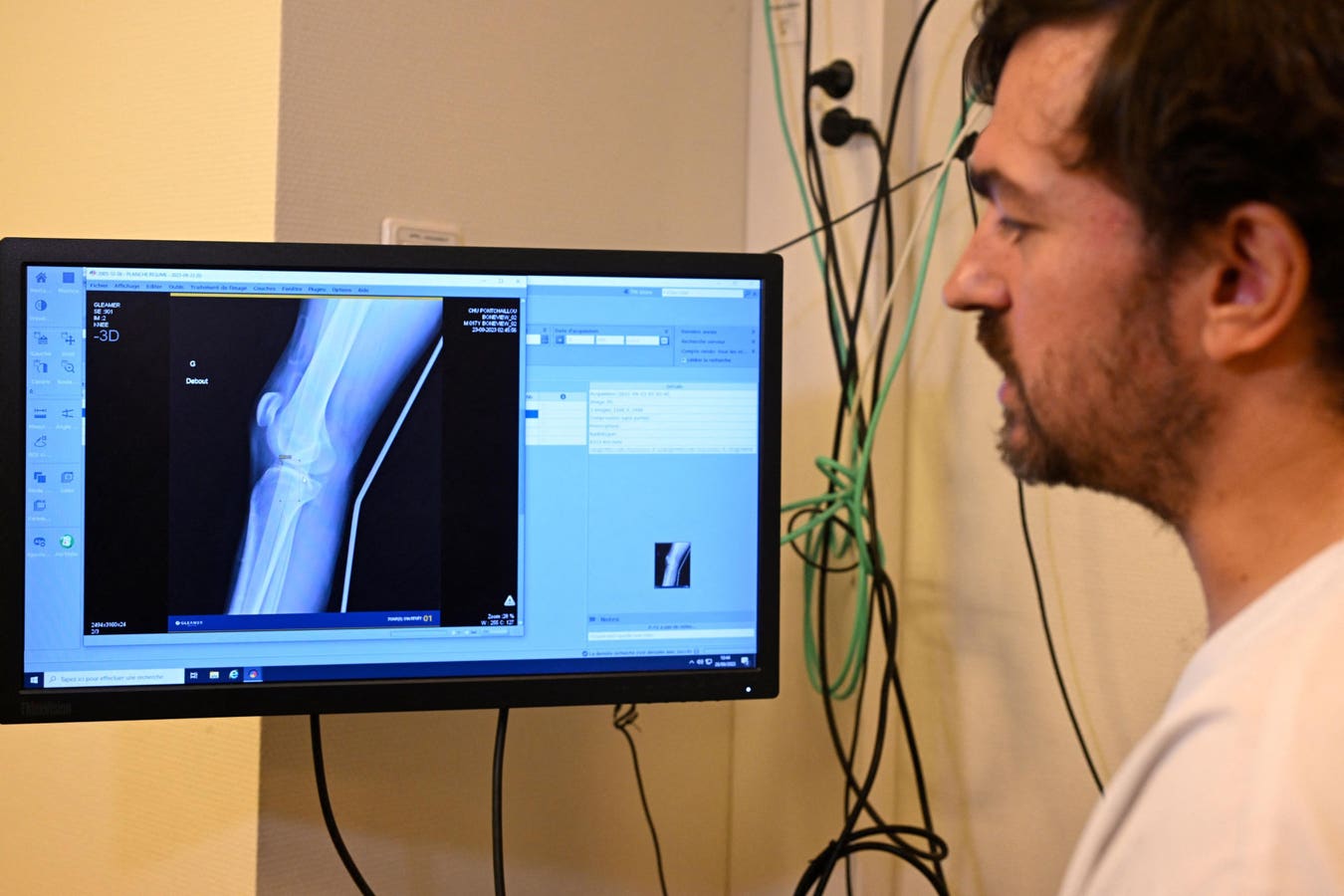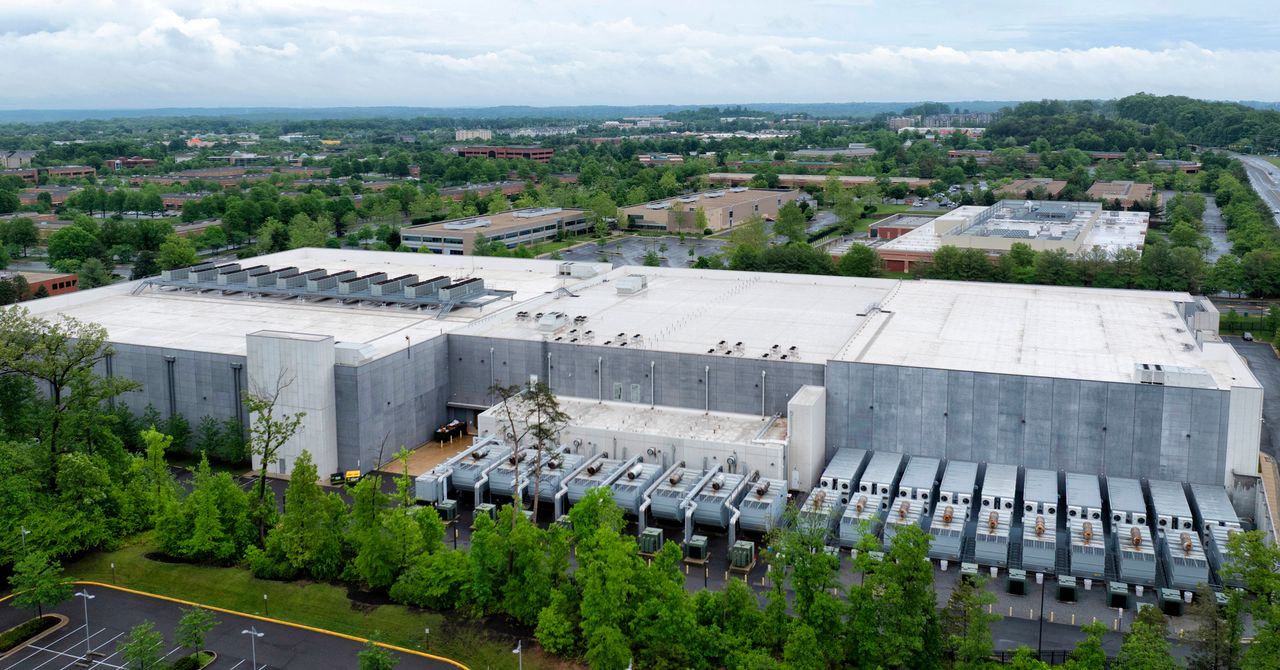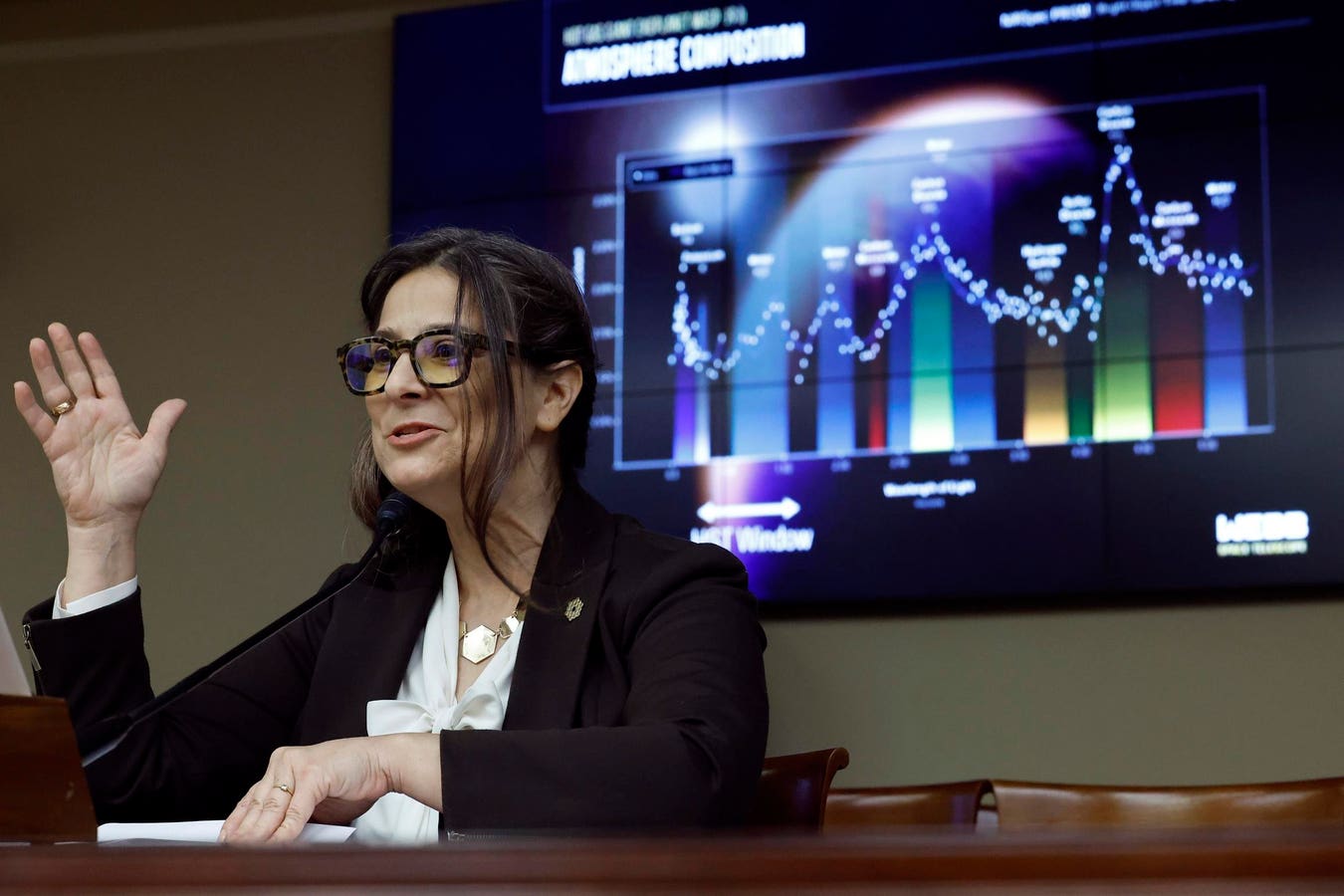Topline
The moon will this Saturday, Aug. 17, join a “planet parade” building in the morning sky. As it does so, it will brush past the Pleiades, a sparkling open cluster of stars that’s best known for dominating the winter night sky. Best seen about an hour before sunrise, bright planets Venus and Jupiter will continue to dominate in the east while Saturn brightens in the south. Rising below Venus and Jupiter will be Mercury, though Uranus and Neptune — despite also being in the sky — are not visible to the naked eye.
A spectacular “planet parade” (also called an alignment) featuring six planets is visible during August 2025.
getty
Key Facts
This “planet parade” is taking place in the morning sky, so you’ll need to get up early to see it. The best time to look is between about two hours and an hour before sunrise, though if you observe until about 45 minutes before sunrise, you may see tiny Mercury join the parade.
About an hour before sunrise on Saturday, Aug. 16, Venus and Jupiter will be very bright in the eastern sky. They will shine at magnitudes -3.9 and -1.8, respectively, and will appear to be about four degrees from each other. Saturn will shine in the southern sky at magnitude 0.8.
Mercury will appear below 10 degrees altitude in the east, according to NASA, so observe from a location with an unobstructed eastern horizon. Note that the exact rise times of planets depend on your location.
The moon, now half-lit as it reaches its last quarter phase, will shine in the east-southeast about three degrees from the Pleaides, also known as M45 and the “Seven Sisters” stars.
The next big highlight of the “planet parade” will come on Wednesday, Aug. 20, when a slender crescent moon will shine very close to a brilliant Venus.
The planets an hour before sunrise on Saturday, Aug. 16, 2025, during the “planet parade.”
Stellarium
‘planet Parades’ And ‘planetary Alignments’
This planet parade follows one in the evening sky in February, when five planets were visible together. Strictly speaking, they do not exist because they are entirely due to Earth’s point of view of the rest of the solar system as it orbits the sun. Although all the planets orbit the sun on the same plane, they do so at vastly different distances and, therefore, apparent speeds as seen from Earth. For example, Venus and Jupiter appear very close to each other, but while Jupiter is four times farther away than Venus. Planet Parades always occur just before sunrise or sunset because Mercury — which is very close to the sun, relatively speaking — is usually lost in the sun’s glare. When it is visible, it’s not far from it. Either way, nothing is ever “aligned”—that’s an error.
What’s Next In The ‘planet Parade’
The planet parade really gets going this weekend as the moon joins the fray. On Monday, Aug. 18, a 26% crescent moon will be seen near Venus and Jupiter. On Tuesday, Aug. 19, Mercury will be at its highest in the morning sky as a 16%-lit crescent moon forms a curve with Venus and Jupiter. On Wednesday, Aug. 20, a 9%-lit crescent moon will be close to Venus, with Mercury below and Jupiter above. On Thursday, Aug. 21, a 4%-lit waning crescent moon will be beneath Jupiter and Venus, close to Mercury. The following planet parade will occur in October 2028, when five planets will be visible together, again before sunrise.








